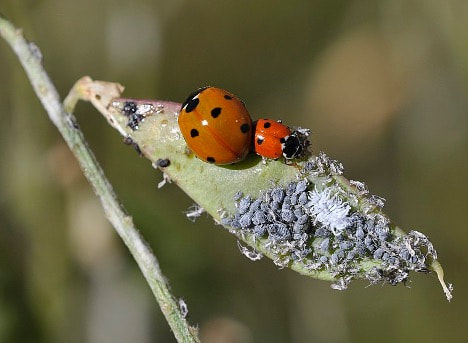|
No one wants bed bugs. Unfortunately, that doesn’t prevent some of us from dealing with them on occasion. In many cases, bed bug problems start with just one intruder. Perhaps this drifter smuggled in on luggage you took on a trip, or in a beautiful antique chest you thrifted. Well, don’t stop thrifting just yet—these situations are rare! But, just in case, let’s review some tips to help you avoid taking an unwanted guest home with you while you are out and about. Read on to find out more about keeping bed bugs out of your personal space. KNOW YOUR ENEMYThe first step in combating a bed bug problem is knowing as much as you can about them. In the case of bed bugs, this includes being able to identify what they look like, signs of their activity, and where you’re most likely to find them. It can’t hurt to also understand a little about how they behave. Let’s review some of these things right off the bat. Bed bugs are hematophagous, meaning, they have to consume blood to survive, and they love human blood. Like mosquitoes, they use a needle-like mouthpart to pierce human skin. After a bed bug feeds, you may be left with a welt similar in appearance to a mosquito bite. In severe cases, hives, wheals, or blisters can result. However, many people do not react to bed bug bites at all. For that reason, bites alone are not a reliable sign of a bed bug problem. Unlike lice and ticks, bed bugs do not remain on the host very long when they feed, so you’re unlikely to find them on your skin or in your hair.
Bed bugs like to be packed in tight, and they can easily hide in crevices as thin as one sheet of paper. Thus, visual inspections for bed bugs must be thorough. Sometimes, instead of looking for a live bug, it can be easier to look for signs of their activity (to start). For instance, look for fecal spots or shed skins, which are often left out in the open and can be easier to find. Look for these signs of activity near where you sleep. In introductory infestations, that is the most likely place to catch bed bugs. However, do not be confident that you have an active infestation until you have located live insects. TIPS TO KEEP BED BUGS AWAYNow that you know what to look for, let’s also go over a few things you can try to keep bed bugs from coming home with you after a trip, when perusing used goods, or when you think you’ve walked into an infested area/dwelling.
 To avoid bringing bed bugs into your home after travel, consider isolating fabrics by bringing some plastic bags. Pack luggage loosely, neatly, and keep items out and easy to see. If you think some of your fabrics have come into contact with bed bugs, double bag them in plastic and tie a tight knot. (Image Credit: https://pxhere.com/en/photo/1356828) WHAT IF I FIND BED BUGS DURING TRAVEL?
CONCLUSIONSThe thought of picking up bed bugs is scary. However, if all of the above steps are followed, it is very possible to avoid taking bed bugs home with you and dealing with an at-home infestation. It is always probable that you could take a bug home with you just by being out and about, but taking precautions help you lower that probability significantly. Now, sleep tight, and don’t let the bed bugs bite!
0 Comments
Did you know that most brightly colored animals are using color to send a message? That message is, “Back off, I’m dangerous”. This phenomenon is called “aposematism”, which is a fancy way of saying that brightly colored animals are trying to tell you that they are poisonous, venomous, or otherwise unappealing when touched or eaten. For many animals, insects included, the more conspicuous the color, the more dangerous the chemical defense. However, recent studies show that for monarch butterflies, which are highly toxic, storing the toxins that make them less tasty to predators comes at a cost that can impact coloration. Scroll down to learn more about the tradeoffs between staying safe on the outside (deterring predators) versus staying safe on the inside (maintaining physical health) for aposematic butterflies. DRESSING FOR ATTENTION You’re probably familiar with monarch butterflies. Their bright colors, vast migrations, pollinator status, and species decline has garnered a lot of media attention. Monarch butterfly larvae are extremely specific when it comes to diet, and the only plant they will feed on is milkweed. This is also the only plant that female monarchs will lay their eggs on. The leaves of milkweed plants contain glycosides, which impact heart function. That makes the plant, and animals that can sequester the toxin of this plant in their bodies, toxic to many birds and mammals. Monarchs are able to integrate glycosides into their body tissues—making them unpalatable to predators. They advertise their toxic nature through their bright orange wings, one of the features that makes them so striking to look at. Aposematism, or being toxic and brightly colored, is common in nature. The result? Predators learn that brightly colored prey are best left alone. SNAPPY DRESSING IS EXPENSIVE
You can see the difficulty this causes for the butterfly. It is clear that aposematic animals, based on the findings in this study, need to fine tune the signaling they do with the toxins they sequester. Wearing all of this protective armor certainly leads to benefits in the sense that predators will definitely steer clear. We know that much is true. But, if the danger signal is communicated via color, predators are likely to respond more effectively to the color signal when the colors are very bright. But, as we just discussed, making this bright signal can lead to a physiological hit for the animal. Thus, the vicious cycle continues and the delicate balance between internal and external survival forges on. CONCLUSIONSInsects are vulnerable to consumption by a number of predators, especially birds and small mammals. Many insects defend themselves using venom or poisons and there are multiple examples of aposematism in the insect world: monarch butterflies, lady beetles, paper wasps, velvet ants—to name a few. However, this study shows that the balance between poisoning others and poisoning oneself is very delicate. It will be interesting to see how insects continue this balancing act, especially in light of continued environmental challenges/stress such as climate change, urbanization, and habitat loss. Will we see duller Monarch butterflies in the future? Time will tell! |
Bug Lessons BlogWelcome science communicators and bug nerds!
Interested in being a guest blogger?
Archives
November 2023
Categories
All
|


